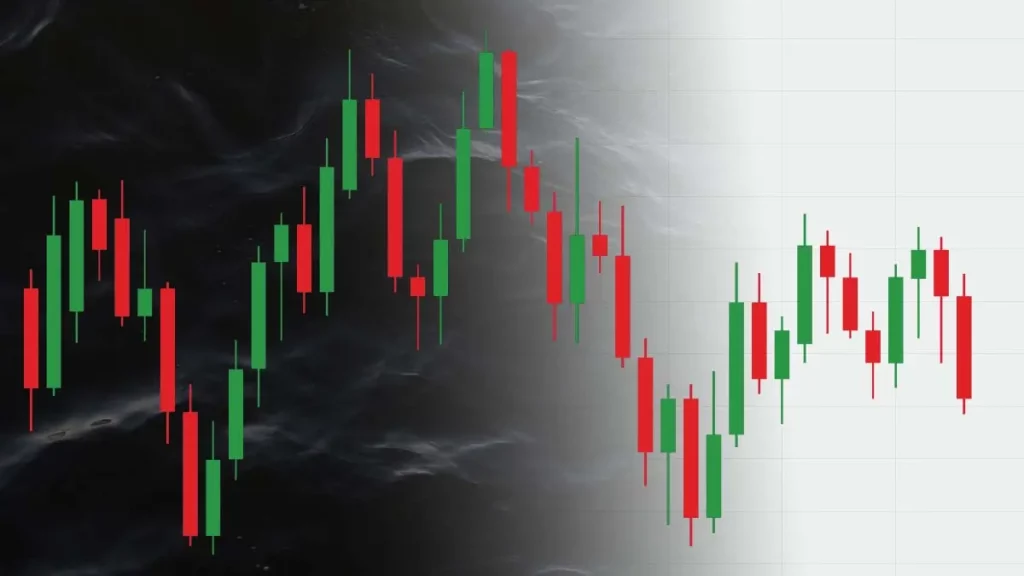In the second quarter of 2024, an unexpected shift rattled Europe’s financial markets. The European Central Bank (ECB) abruptly paused its quantitative easing (QE) bond-buying program, defying market expectations of a continued accommodative stance amid persistent inflation concerns. Meanwhile, across the Atlantic, a surge in “dark pool” trading activity concentrated in mega-cap U.S. technology stocks like Meta and Nvidia raised eyebrows among market watchers. Nasdaq’s hidden liquidity in these tech titans ballooned, signaling a potentially profound reallocation of global capital flows. How could these two seemingly disconnected events—a monetary policy pivot in Europe and the covert buying frenzy in U.S. tech—intersect to reshape the cross-Atlantic financial landscape? This article dives into the data, explores the cascading market consequences, contrasts expert opinions, and weighs the possible trajectories heading into 2025.
The core tension lies in understanding why the ECB’s unexpected QE pause coincided with a pronounced spike in dark-pool volumes in U.S. mega-cap technology names and whether these phenomena reflect a deeper clash in monetary and market dynamics between America and Europe. Dark pools—private exchanges where large blocks of stocks trade away from public view—offer institutional investors discretion but can also signal growing concentration of liquidity. Nasdaq’s second-quarter data revealed a 28% increase in hidden trading volumes for Meta and a 35% jump for Nvidia compared to Q1, unprecedented in recent years. At the same time, the ECB’s halt to bond purchases came amid stubborn inflation, but also rising concerns about market distortions and diminished policy efficacy.
The collision of these forces has had immediate ripple effects. U.S. mega-cap tech stocks absorbed a disproportionate share of global liquidity, driving Nasdaq to outpace European benchmarks sharply. European bank stocks, in contrast, faced downward pressure on valuations as market participants recalibrated risk amid tighter monetary conditions. This bifurcation highlights the growing divergence between the American growth-driven narrative and Europe’s cautious normalization. Yet the debate among policymakers and quants remains fierce. ECB officials maintain the pause is a measured step toward policy normalization with no systemic risks, while quant teams from Boston asset managers warn that excessive dark-pool concentration in U.S. tech indicates a quiet but decisive global asset reallocation favoring the U.S., potentially at Europe’s expense.
Examining the data in detail, Nasdaq’s dark-pool trading volumes surged predominantly in mega-cap technology companies in Q2 2024. Meta Platforms saw hidden liquidity volumes rise from approximately 2.1 billion shares in Q1 to 2.7 billion shares in Q2. Nvidia, riding strong AI-related momentum, experienced a similar jump, with dark pool volumes increasing from 1.8 billion to 2.4 billion shares over the same period. Analysts at TradeTech Insights attribute this to large institutional players repositioning stealthily, aiming to accumulate or offload shares without triggering public price swings. Dark pools are favored for executing blocks of 10,000 shares or more quietly. The surge suggests heightened tactical trading coinciding with a broader shift in risk appetite toward U.S. tech giants.
On the ECB front, the surprise pause of its bond-buying program—originally scheduled to continue well into late 2024—caught markets off guard. Official statements emphasized that “inflation dynamics have shifted and the ECB must reassess the monetary environment,” signaling concern about overstimulating already buoyant asset prices. Inflation remained sticky at 5.1% year-on-year in Q2, above the ECB’s 2% target, but rising yields and tighter credit conditions pressured sovereign and corporate bond markets. The halt led to a temporary spike in 10-year German bund yields from 2.4% to 2.8% within weeks, unsettling European fixed income. See Figure 1 for a comparison of ECB asset purchase volumes from Q1 through Q3 2024.
These concurrent developments illustrate a growing divergence in monetary and market conditions across the Atlantic. While the Fed’s policy trajectory continued to signal caution but accommodative undertones, Europe’s monetary stance tightened unexpectedly. The resulting capital flows favored U.S. equity markets, particularly mega-cap tech, which drew liquidity seeking growth and perceived safe haven amid global uncertainty. Meanwhile, Europe’s banking sector faced valuation compression as rising yields and tighter credit conditions threatened earnings, triggering sector underperformance relative to global peers.
Historical parallels help contextualize this bifurcation. The 2013 “taper tantrum,” when the Fed first hinted at scaling back asset purchases, led to capital outflows from emerging markets and pressure on European peripheral bonds. However, the 2024 scenario differs because the ECB initiated the policy shift while U.S. tech liquidity surged, suggesting a more complex reallocation rather than a unidirectional shock. Unlike 2013, this episode highlights the increasing importance of opaque liquidity venues like dark pools in reflecting institutional strategy. Whereas past shocks primarily showed in public order books, today’s hidden trading layers obscure immediate market signals, complicating traditional risk assessments.
The market consequences extend beyond stocks and bonds. Currency markets reflected the tension as the euro weakened against the dollar, dropping from 1.12 to 1.08 in mid-2024, partly driven by differential monetary policy expectations. Currency strategists at Morgan Stanley noted that the EUR/USD moves were closely linked to shifts in bond yields and equity flows, with capital increasingly flowing to U.S. tech-led growth stories. Additionally, cross-border fund flows into U.S. tech ETFs saw net inflows of $15 billion in Q2 2024, while European bank sector ETFs experienced outflows nearing $6 billion. This dichotomy underlines a broader global appetite shift, emphasizing growth and innovation over cyclical recovery themes favored in Europe.

Institutional commentary divides sharply. The ECB defends its pause as prudent and necessary, emphasizing that its balance sheet normalization is on track and that market stability remains intact. ECB President Christine Lagarde argued, “Our mandate requires us to balance inflation control with financial stability. The pause allows us to evaluate and adjust as conditions evolve.” Conversely, quantitative analysts at a Boston-based hedge fund caution that the dark-pool data exposes a hidden risk. Their recent white paper warns that “Mega-cap tech’s disproportionate dark-pool liquidity concentration signals growing systemic risk and potential market bifurcation,” forecasting that global asset allocation is quietly pivoting toward U.S. equities, challenging European recovery prospects.
Major global financial institutions echo this divide. Goldman Sachs projects continued U.S. equity outperformance driven by tech innovation but warns of valuation risks if liquidity dries. Morgan Stanley highlights the importance of monitoring dark-pool data as a leading indicator of institutional positioning shifts. The IMF’s regional office in Frankfurt underscored the ECB’s policy shift as necessary but cautioned that “Europe’s banking sector requires vigilant risk management to absorb tightening shocks without triggering credit crunches.”
Some contrarian voices further complicate the narrative. Nobel laureate economist Robert Shiller recently questioned traditional market models, suggesting that dark pools may mask underlying fragility in supposedly resilient mega-cap stocks. He argues that “hidden liquidity can amplify sudden price swings once confidence falters,” implying that current conditions warrant caution despite apparent strength. Such views encourage investors and policymakers alike to reconsider how evolving market microstructures influence systemic stability.
Looking forward, multiple scenarios could unfold in 2025. An optimistic outcome envisions the ECB resuming bond purchases at a calibrated pace once inflation shows sustainable decline, stabilizing European fixed income and bank valuations. Meanwhile, U.S. tech firms continue innovation-driven growth, albeit with moderated volatility as dark pool activity normalizes. In this environment, cross-Atlantic capital flows find a new equilibrium, supporting synchronized but differentiated growth.
A baseline or neutral scenario entails prolonged ECB caution amid persistent inflationary pressures, sustaining market bifurcation. U.S. tech stocks maintain dominance but face heightened scrutiny on valuations and liquidity dynamics. Europe’s banking sector endures ongoing valuation headwinds, and the euro remains under pressure, creating cyclical headwinds for the region’s economic rebound.
The downside risk sees escalating market volatility triggered by a sudden reassessment of tech valuations, perhaps sparked by a liquidity event in dark pools or unexpected inflation persistence. Concurrently, European bond markets suffer deeper corrections, forcing aggressive ECB interventions and raising fears of a credit crunch. Such turmoil could ripple through global financial markets, increasing geopolitical and economic uncertainty.
For investors, several strategies merit consideration. First, closely monitor dark-pool volume data on mega-cap tech to gauge institutional sentiment and potential liquidity shifts. Second, track ECB communications and European bond yields for early signs of monetary policy recalibration. Third, diversify exposure across growth and cyclical sectors to mitigate regional bifurcation risks. Fourth, incorporate currency hedging strategies amid euro-dollar volatility. Finally, remain alert to cross-asset correlations that may evolve rapidly due to hidden liquidity dynamics.
In summary, the surprising 2024 pause in ECB quantitative easing and the concurrent surge in dark-pool activity in U.S. mega-cap tech stocks represent interconnected phenomena signaling a broader transatlantic divergence in monetary and market conditions. While the ECB frames its pause as policy normalization, the hidden liquidity trends suggest a quiet yet significant global asset reallocation favoring U.S. growth sectors. Navigating these dynamics will challenge investors and policymakers alike in 2025 as they adapt to new liquidity paradigms and evolving cross-market linkages.
Will dark pools become the new bellwether for global capital flows, and can Europe respond effectively before losing further ground in this shifting landscape?






























